Great Barrier Reef is well established as the world’s largest coral reef system in the entire world. This reef lies off the coast of Queensland, Australia. This coral reef system is an amazing work of art that stretches over 344,400 kilometers total.
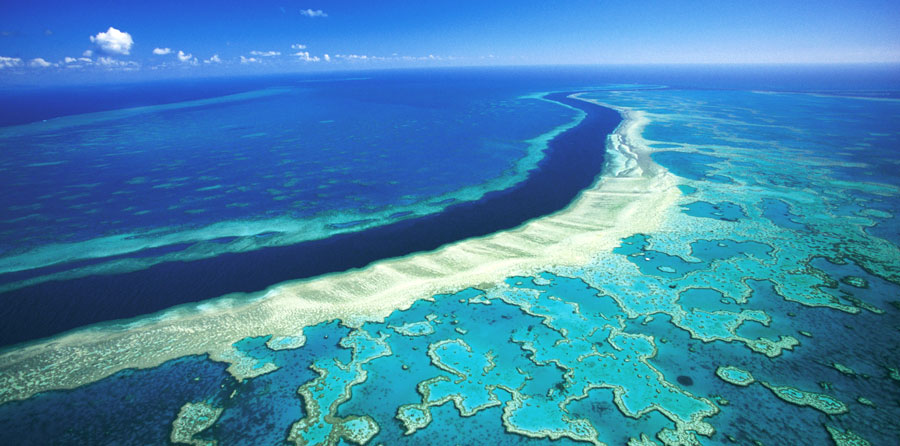
The Great Barrier Reef is comprised of some 2,900 individual coral reef systems and 900 islands. The reef is located in the Coral Sea.
Like The Great Wall of China, this huge reef system is the only other object that can be seen from outer space – but unlike the manmade wall, it is the only completely natural structure that can be witnessed from such a distance. This is the world’s biggest structure built by organisms.
Scientists estimate this reef to be some 25 million years old.
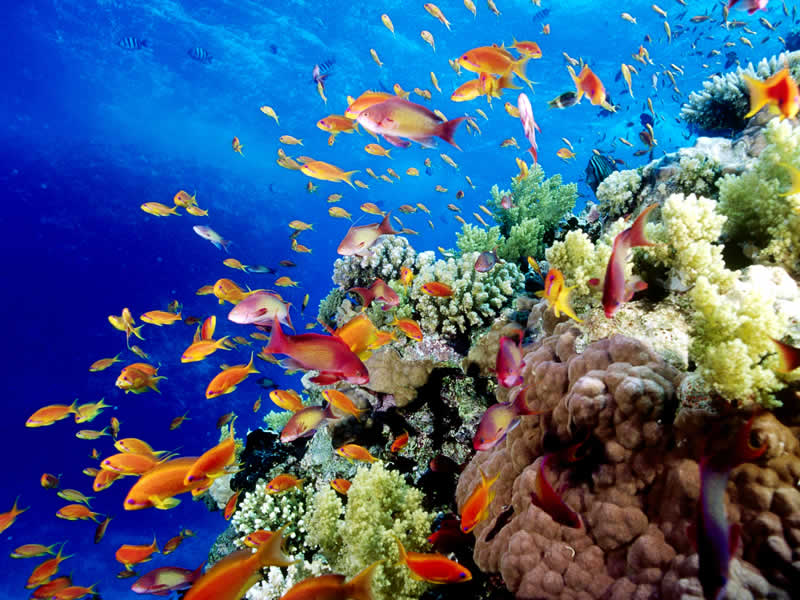
Marine Biodiversity
The Great Barrier Reef is home to 30 species of porpoises, 25 species of dolphins, 30 species of whales, and very rare whale which can be sighted only here called the Dwarf Mink Whale.
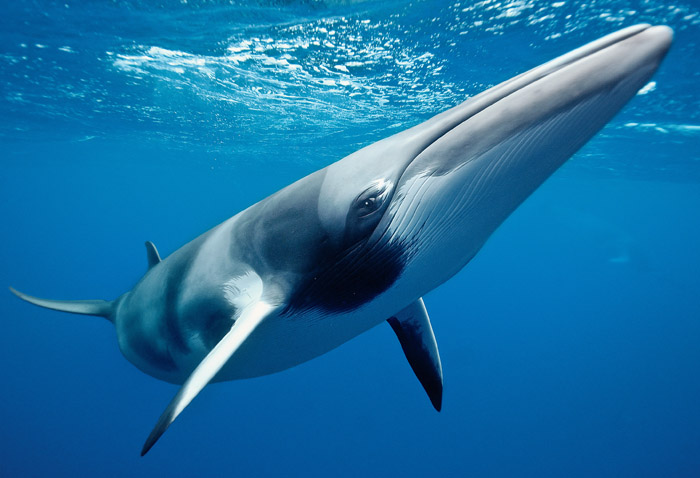
Another rarely seen species of whale you can see here is the huge humpback whale.
The area also boats some 6 species of sea turtles, including green sea turtles, leatherback sea turtles, flatback turtles, hawksbill turtles, and the Olive Ridley.
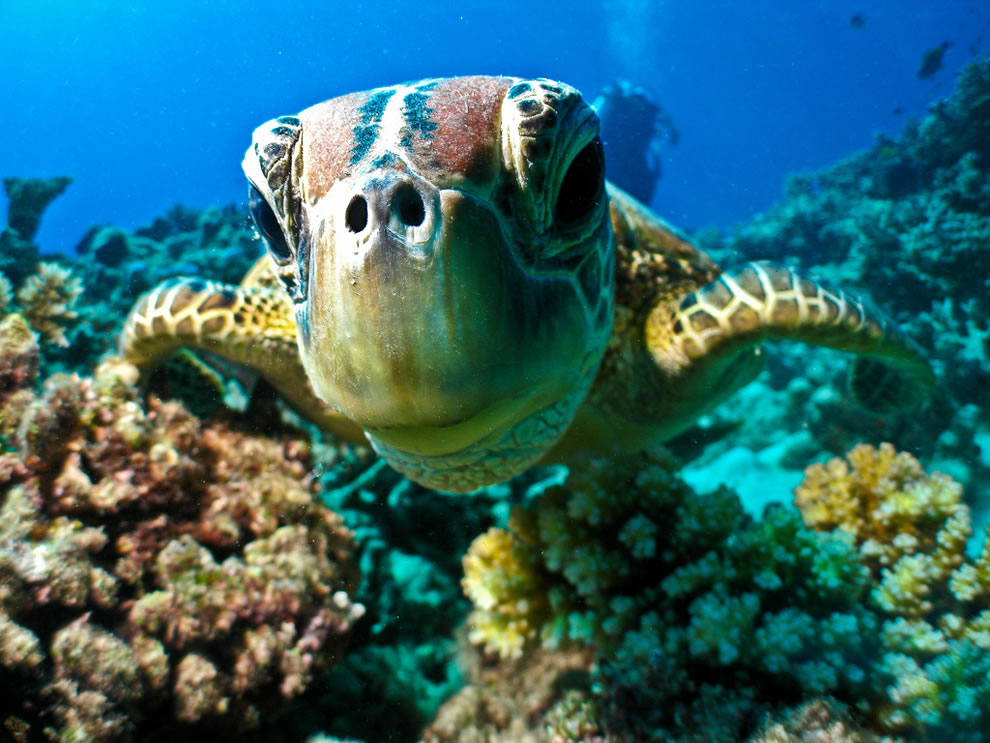
The reef also attracts the likes of crocodiles, skates, and some 5,000 species of mollusks, nudibranchs, cone tails, pipefish, and sea horses.
Four hundred species of both hard and soft corals spawn here.
The Fishes of Great Barrier Reef
More than 1,500 species of fish including red bass, clown fish, and red throat emperors call the Great Barrier their home.
One of the most interesting species of fish seen in this reef is the huge Wrasse, pictured swimming with the scuba diver below. The Humphead Wrasse is the most commonly seen wrasse-type fish here, easily recognizable by the huge hump on its head.

Maori Wrasse are some of the most fascinating fish that dwell in Great Barrier’s waters. In fact, they are some of the longest-living fish in the whole reef system, with some living to be thirty years old. But they are also endangered, because when they were plentiful, they gained a reputation for being one of the most delicious fish to eat in the waters, and they were heavily overfished. They are now one of the most sought after fish in the reef for sightseeing, as they are rare in these waters now.
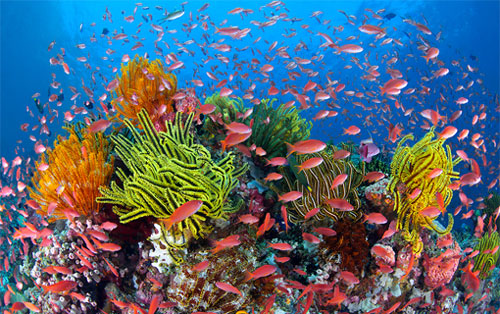
Other fish seen in the waters of the Great Barrier Fish are many species of coral trout, triggerfish, which are very brightly colored, and one of the most vividly colored fish in the world, the beautiful Surgeonfish, one of the more sought after aquarium fish for their colorful patterns and stripes.
Sharks are often seen in the waters here—in fact, over 160 species of them. The sharks that you see most often when diving the Great Barrier Reef’s waters are hammerhead sharks, tiger sharks, and white-tipped reef sharks.
Other colorful fish you’ll see plenty of here are gobies, parrotfish, cardinal fish, angelfish, and butterfly fish.
Environmental Threats and the Great Barrier Reef
Several environmental factors threaten Great Barrier Reef, chiefly warming temperatures, pollution from declining water quality, loss of coastal wetlands (which act as a filter for toxins), the runoffs of fertilizers, overfishing, crown of thorns starfish, and shipping because of shipwrecks and spillage, which are very damaging to the great reefs.
Shipwrecks, in fact, immediately and irrevocably damage reefs. For example, in 2010, a large coal carrier wrecked in the Great Barrier region, spilling four tons of oil into the reef area and causing extensive damage. So far, there have been some 1,700 shipwrecks in the Great Barrier Reef. And all of them have taken their toll.
Global Warming a Great Threat for Great Barrier
The Great Barrier Reef Marine Park has named global warming and climate change the number one threat to the reefs here. Temperatures are rising, creating increased seawater temperatures, which cause coral bleaching.
Coral bleaching is expected to become an ongoing problem in the Great Barrier Reef, occurring every time the waters really warm in the hotter seasons.
Global warming is a terrible threat to these reefs and is only expected to become more so as global warming increases even more due to unceasing pollution.
The Consequences of Global Warming
Eventually, as coral bleaching continues, reefs will not be able to thrive in the warmer temperatures. Remember, reefs thrive in temperatures from 73 to 84 degrees Fahrenheit—no more. Bleaching makes the reefs more susceptible to disease and, eventually, parts of the reef will die.
Food for Hundreds of Thousands
The Great Barrier Reef is used by two groups of people, mainly, for fishing: The Aboriginal Australian people and the Torres Strait Islanders. The aborigines have been living here for some 40,000 years. They farm here and fish here as well.
Both peoples are highly dependent upon this reef area for food and to them, the reef is an important cultural artifact as well.
Runoff and Sedimentation
Runoff of harmful fertilizers and pesticides from farmers, who call the Queensland area home, pose a serious threat to coral reefs. Farmers use both herbicides and pesticides that are made of heavy metals such as lead, mercury, arsenic and other toxins (dangerous, of course, to human and aquatic species).
Runoff occurs with the erosion of these farmers’ soil, which then runs down into the coast, eventually polluting the waters of the reef system.
Marine biologists are very concerned about the farmers of Queensland and these pesticides and herbicides because the runoff from these farms has damaged these reefs quite extensively. Scientists have already begun to notice a strong decrease in both the health of the reef and the biodiversity here, which is decreasing in all areas where there is fertilizer and sediment runoff.
The Crown of Thorns Starfish
Although beautiful they most certainly are deadly to reefs.

The Crown of Thorns Starfish is a native, poisonous invertebrate that has called this reef home since the beginning of time. Typically, the starfish have a positive effect on the reefs, as they feed off the faster-growing reefs allowing the slower growing reefs to form polyps and multiply.
However, when large colonies develop, all feeding on the reefs at the same time, coral is eaten by the starfish, which inverts their stomachs to the point that they begin feeding on the soft, fleshy parts of the reef.
Australian scientists are working hard to devise a way to destroying these predatory animals, who are the major threat to coral decline in the Great Barrier Reef.
Coral Cover Decline
The coral reefs here have been damaged to the extent that coral cover of the Great Barrier Reef is only half of what they were thirty years ago. The biggest culprit is the Crown of Thorns Starfish, who is responsible for half the damage and loss of the reef, with storms coming in a close second, and coral bleaching, a third.
Tourism and Great Barrier Reef
Believe it or not, tourism in Great Barrier alone supplements our world economy to the tune of 3 billion dollars a year. Therefore, scientists are scrambling furiously to save these reefs, not only for their beauty but for their salvaging effects on our damaged world economy.
